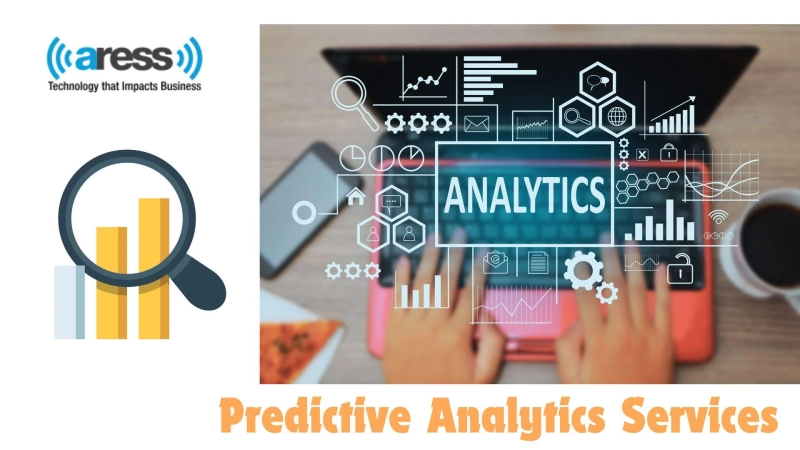In today's digital age, data is one of the most valuable assets a company can possess. Yet, the sheer volume of data generated daily can be overwhelming, making it difficult to extract actionable insights. This is where predictive analytics comes into play. By transforming raw data into predictive models, businesses can foresee trends, optimize processes, and enhance decision-making, paving the way for strategic growth and competitive advantage.
Understanding Predictive Analytics
Predictive analytics is a branch of advanced analytics that uses statistical techniques, machine learning algorithms, and data mining to analyze historical data and predict future events. Unlike traditional analytics, which provides insights into past performance, predictive analytics forecasts future outcomes, enabling businesses to anticipate changes and act proactively.
The Strategic Benefits Of Predictive Analytics
Predictive analytics services offer a plethora of benefits that can drive business success across various domains, including:
Market Trends and Customer Behavior: By analyzing past purchase data, social media activity, and other customer interactions, predictive analytics can identify emerging market trends and predict customer behavior. This allows companies to tailor their marketing strategies, create personalized offers, and improve customer satisfaction and loyalty.
Sales Forecasting and Inventory Management: Accurate sales forecasting is crucial for inventory management. Predictive analytics can help businesses predict demand for products, reducing the risk of overstocking or stockouts. This leads to efficient inventory management, cost savings, and improved cash flow.
Fraud Detection and Risk Management: In industries like finance and insurance, predictive analytics plays a vital role in identifying fraudulent activities and assessing risk. By analyzing transaction patterns and identifying anomalies, businesses can detect fraud early and mitigate potential losses.
Operational Efficiency: Predictive maintenance is a powerful application of predictive analytics in manufacturing and logistics. By forecasting equipment failures and maintenance needs, companies can schedule timely repairs, minimize downtime, and extend the lifespan of machinery.
Healthcare Innovations: In healthcare, predictive analytics can predict disease outbreaks, patient admissions, and treatment outcomes. This enables healthcare providers to allocate resources more efficiently, improve patient care, and reduce operational costs.
Human Resources Optimization: Predictive analytics can revolutionize human resources by predicting employee turnover, identifying factors contributing to job satisfaction, and improving recruitment strategies. This leads to better talent retention and a more engaged workforce.
Key Elements of Effective Predictive Analytics
To harness the full potential of predictive analytics, it is essential to understand its core components and implementation strategies:
Data Integration and Preparation: The first step in predictive analytics is collecting and integrating data from various sources. This data must be cleaned and preprocessed to ensure its accuracy and relevance.
Exploratory Data Analysis (EDA): EDA involves analyzing data sets to summarize their main characteristics, often using visual methods. This step helps identify patterns, relationships, and anomalies in the data.
Model Development and Validation: Developing predictive models involves selecting the appropriate algorithms and training them on historical data. These models must be validated to ensure their accuracy and reliability.
Machine Learning Algorithms: Advanced machine learning techniques, such as decision trees, random forests, neural networks, and gradient boosting, are used to enhance the predictive power of the models.
Deployment and Monitoring: Once validated, predictive models are deployed into the business environment. Continuous monitoring and periodic updates are essential to maintaining their accuracy over time.
Choosing A Predictive Analytics Service Provider
Selecting the right predictive analytics service provider is critical for achieving desired outcomes. Here are some factors to consider:
Industry Expertise: Ensure the provider has experience and expertise in your industry. This knowledge is crucial for understanding industry-specific challenges and opportunities.
Technological Capabilities: The provider should use state-of-the-art technologies and tools to deliver accurate and reliable predictive analytics solutions.
Customization and Flexibility: Look for providers that offer customizable solutions tailored to your business needs. Flexibility in adapting to changing requirements is also important.
Data Security and Compliance: Ensure the provider adheres to stringent data security and privacy standards. Compliance with relevant regulations is essential to protecting sensitive information.
Support and Training: Ongoing support and training are vital for maximizing the benefits of predictive analytics. Choose a provider that offers comprehensive support and training programs.
The Future Of Predictive Analytics
The future of predictive analytics is bright, with advancements in artificial intelligence, big data, and cloud computing driving its evolution. Emerging trends include:
Real-Time Predictive Analytics: The ability to analyze and act on data in real-time will become increasingly important, allowing businesses to respond swiftly to changing conditions.
Integration with IoT: The Internet of Things (IoT) will provide vast amounts of data from connected devices, enhancing the accuracy and scope of predictive analytics.
Enhanced Natural Language Processing (NLP): Improved NLP capabilities will enable better analysis of unstructured data, such as text and speech, opening new avenues for predictive insights.
Conclusion
Predictive analytics services are transforming how businesses operate, offering the ability to anticipate and adapt to future events. By leveraging historical data and advanced algorithms, companies can make informed decisions, optimize operations, and enhance customer experiences. As technology continues to evolve, predictive analytics will become an even more integral part of business strategy, driving innovation and growth.



